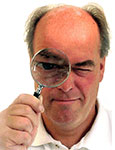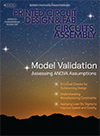Features Articles
 The simplest motivational measures can go a long way with tomorrow’s workers.
The simplest motivational measures can go a long way with tomorrow’s workers.
The past couple years have been good ones. Despite increased and costly quality protocols, foreign competition, escalating raw material costs and fewer material suppliers – and even the advent of punitive tariffs – business has been good. With fewer negative issues to contend with, the one that continues to be most talked about is the difficulty to locate, recruit, develop, and retain quality employees. Indeed, this may be the challenge of our times. As older employees approach retirement, ones who are just beginning their careers seem less interested in manufacturing as a career path than at any time we can remember.
This talent gap threatens to upturn our industry – nay, most industries – more dramatically than any new disruptive technology. Much has been said about the difficulties attracting millennials to our industry. Many initiatives have been started to educate, entice and attract younger people to companies that build technology, products and the “things” we need and use in our day-to-day lives. Some have been more successful than others, but none has been a silver bullet that works all the time in every circumstance, across all industries. While creating work environments that more resemble a summer camp than a place to produce high-quality, complex products may be the way to emulate the software-centric businesses so many millennials yearn to be part of, maybe there is a simpler approach.
 Would you stake your reputation on a new supply chain in a new region?
Would you stake your reputation on a new supply chain in a new region?
The one predicable outcome of trade wars is they tend to make sourcing teams evaluate their outsourcing strategies. Given that project requirements and cost drivers change over time, even without fluctuating tariffs, periodic evaluations can help better align electronics manufacturing services (EMS) partners with current needs. That said, moving to mitigate tariff concerns alone can create a cascade of unplanned costs that far outweigh the cost of tariffs.
Areas to evaluate when considering a move include:
 It was 16 years ago this month when a group of Chicago-area printed circuit board manufacturers stuck a flag in the ground and declared themselves the new vanguard of the American industry. At an early meeting, leaders called free trade “the seed of our own destruction,” and railed against the devastation of the domestic fab industry.
It was 16 years ago this month when a group of Chicago-area printed circuit board manufacturers stuck a flag in the ground and declared themselves the new vanguard of the American industry. At an early meeting, leaders called free trade “the seed of our own destruction,” and railed against the devastation of the domestic fab industry.
They called on public officials to fight China on currency manipulation and tariffs, and to enact trade policy that better fit the current state of the domestic market. Nothing less than the long-term security of the US was at stake.
The group had a point: Domestic PCB production had fallen by half in three years to $5 billion. Not only was no recovery in sight, but in some cases the deck seemed stacked against them. For instance, raw materials imported to the US from Asia were assessed tariffs, but assembled PCBs were not. Ouch.
 How proper investigative work can alleviate misguided print process adjustments.
How proper investigative work can alleviate misguided print process adjustments.
Printing is arguably one of the most sensitive processes within the entire PCB assembly operation. Not surprisingly, stencil printing’s multi-input interdependency and sensitivity have become more pronounced as miniaturization has taken hold. Even slight variations can cause process shifts, a reality our team was reminded of while conducting recent internal testing.
Our engineers set up a test with a really long board run to evaluate time to bridge, a fairly standard analysis used to understand how many PCBs can be printed for a particular product until solder paste bridging begins to appear. The evaluation, which was performed using a relatively complex ASM test board, was proceeding beautifully until we noticed a sudden shift in the output. The measurable Sigma shift went from a process running at 4 Sigma (1.33 Cpk) to 3 Sigma (1.0 Cpk). The engineer running the evaluation was looking at the process window and robustness, beginning at a 10,000 ft. view with a box plot, which gives reasonable stability insight across the entire run. When a more granular examination of the data was conducted, the data spike appeared on three boards in the batch, with one PCB being more extreme.
 Build-in cleaning time during chemistry changeovers and after extended line shutdowns.
Build-in cleaning time during chemistry changeovers and after extended line shutdowns.
Much time and planning are invested in the choice of the ideal conformal coating material and process to adequately protect printed circuit boards. This often includes multiple qualification trials. There is also sometimes long and detailed testing in areas such as electrical performance, flame resistance, and thermal or mechanical cycling. Unfortunately, the qualification and testing process for conformal coatings is simply a snapshot of the process at the start. To maintain consistency, an often-overlooked activity remains: regular cleaning and flushing of the selective conformal coating equipment.
In general, the following comments and guidelines are designed for a discussion involving typical modern selective coating equipment (FIGURE 1). However, nearly all the principles are applicable to manual spraying operations as well.
 Flux becomes increasingly tenacious the longer it sits on the board.
Flux becomes increasingly tenacious the longer it sits on the board.
This month our topic is not so much a defect as something to consider when running environmental tests before any destructive analysis on solder joints. The through-hole joints shown in FIGURES 1 and 2 were soldered with a high-temperature alloy as part of our trials on robotic laser and single point soldering. The amount of flux in high-temperature cored wire tends to be higher, hence more residues after soldering. If sample boards will be exposed to high-temperature storage, in this case 200°C for 1,000 hr., or temperature cycling, clean the residues first. It is much more difficult to clean after this level of aging, and mounting samples in epoxy for microsections is much more difficult.
Press Releases
- Altus Partners with Sellectronics to Enhance Manufacturing Capabilities with PVA Delta 8 System
- ITW EAE Celebrates Major Milestone in Domestic Manufacturing Expansion
- Micro Technology Services Selects PBT Works CompaCLEAN III for Advanced PCB Cleaning Performance
- Indium Corp. is Electrifying the Future with Advanced Materials Solutions at Productronica


